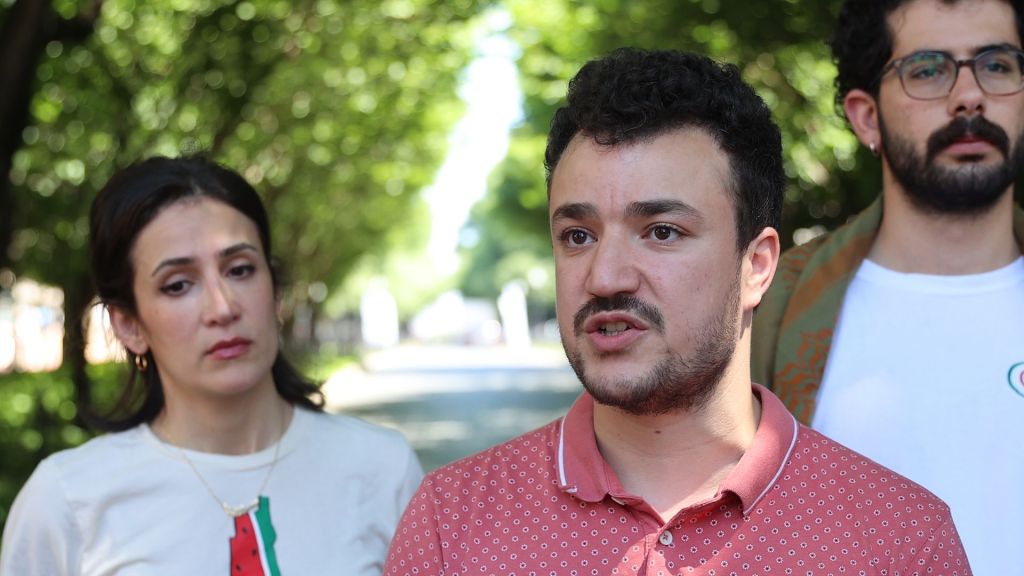
[Kennedy Felton]
[ON CAM]
IMAGINE TRADING SKYSCRAPERS FOR SEASCAPES – WHERE YOUR DAILY COMMUTE INVOLVES DIVING 600 FEET BELOW THE SURFACE.
MEET ‘DEEP’… THE AMBITIOUS PROJECT REDEFINING OCEANFRONT LIVING BY MAKING THE DEEP SEA HUMANITY’S NEXT NEIGHBORHOOD.
L3: Kristen Tertoole | CEO, Deep
COURTESY: DEEP
:02 – :07
We want humans to be able to live, work and explore underwater in order to gain a better understanding of the ocean
DEEP IS AN OCEAN TECHNOLOGY COMPANY ON A MISSION TO ESTABLISH LONG-TERM HUMAN PRESENCE UNDERWATER BY 20-27. THEIR HABITAT SYSTEM – KNOWN AS SENTINEL – IS CURRENTLY UNDER CONSTRUCTION AND TESTING AT DEEP’S CAMPUS FACILITY IN THE UNITED KINGDOM.
THE PURPOSE – TO ENABLE IN DEPTH EXPLORATION OF THE EPIPELAGIC ZONE… THE OCEAN LAYER WHERE SUNLIGHT STILL PENETRATES AND MOST MARINE LIFE RESIDE.
THE INTERIOR IS DESIGNED TO SUPPORT SCIENTISTS AND RESEARCHERS LIVING UNDERWATER FOR EXTENDED PERIODS OF TIME.
IT’S COMPLETE WITH LABS… COMMUNAL AREAS… PRIVATE BEDROOMS AND BATHROOMS FOR A CREW OF SIX BUT CAN BE TAILORED TO SUPPORT LARGER TEAMS OF UP TO 50.
L3: Kristen Tertoole | CEO, Deep
COURTESY: DEEP
:45 – :54
It will go in the water at DEEP’s campus first, where we will use the opportunity to test and train and optimize our operating systems before it goes out to the ocean.
THIS UNDERWATER HABITAT SYSTEM IS RELOCATABLE… MEANING IT CAN BE DEPLOYED TO DIFFERENT PARTS OF THE WORLD AS NEEDED. THE MODULAR DESIGN ALLOWS FOR LONG TERM USE… WITH A SERVICE LIFE OF UP TO 20 YEARS.
TO SUPPORT SENTINEL – DEEP IS ALSO DEVELOPING VANGUARD – A TRANSFER SHUTTLE THAT WILL ALLOW DIVERS AND RESEARCHERS TO SAFELY ENTER AND EXIT THE DEEP SEA HABITAT WHILE ENSURING PROPER DECOMPRESSION AND SAFETY.
SOME HAVE REPORTEDLY RAISED QUESTIONS ABOUT SENTINEL’S SAFETY IN LIGHT OF THE 20-23 TITAN SUBMERSIBLE IMPLOSION.. WHICH TRAGICALLY KILLED FIVE PEOPLE ON A TOURIST EXPEDITION TO THE TITANIC WRECK.
BUT DEEP TELLS THE GUARDIAN THERE *IS A DIFFERENCE BETWEEN THE TWO PROJECTS.
UNLIKE TITAN… SENTENIEL IS UNDERGOING RIGOROUS CERTIFICATION THROUGH A CLASSIFICATION AND SAFETY AGENCY… ENSURING ITS DESIGN AND MANUFACTURING MEET STRICT INDUSTRY STANDARDS
THE TITAN SUBMERSIBLE BY CONTRAST OPERATED OUTSIDE TRADITIONAL REGULATORY FRAMEWORKS… A DECISION THAT DREW CRITICISM EVEN BEFORE THE INCIDENT.
DEEP’S APPROACH GOES BEYOND ENGINEERING CERTIFICATIONS… THEY’RE ALSO DOING EXTENSIVE TRAINING. THE COMPANY’S RESEARCH DIVING AND TRAINING LEAD TOLD THE GUARDIAN THAT IT WILL TAKE ANYWHERE FROM A YEAR TO 18 MONTHS TO TRAIN AN INEXPERIENCED DIVER TO OPERATE A SENTINEL SYSTEM.
REPORTEDLY MORE THAN 100 MILLION DOLLARS IS BEING INVESTED IN DEEP.. THOUGH THE INVESTOR’S IDENTITY REMAINS UNDISCLOSED.











